Mastering Widgets on Android: Your Complete Guide
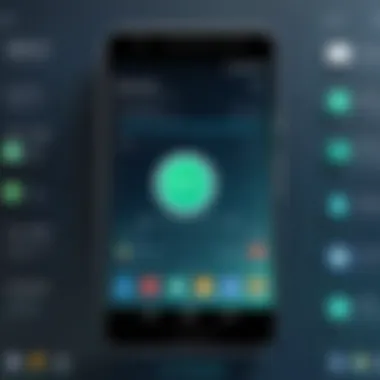
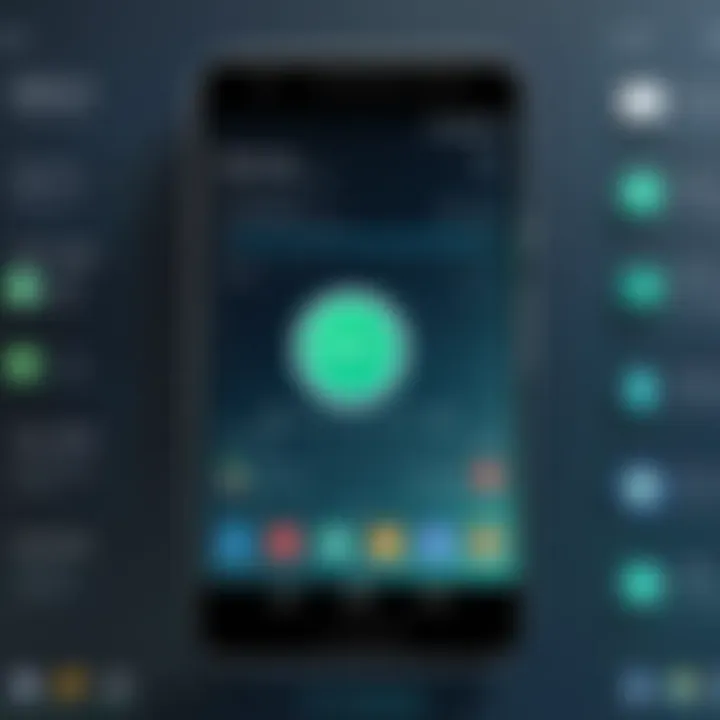
Intro
In the realm of Android devices, widgets stand as a compelling feature that enhances the user experience significantly. These interactive elements allow users to personalize their home screens and access pertinent information at a glance. Whether you are tracking your fitness goals, staying updated with news, or managing your calendar events, widgets provide instant access without the need to dive deep into apps.
This comprehensive guide will unravel the process of acquiring and customizing widgets, ensuring you fully harness their potential.
Overview of the Technology
Widgets function as mini-applications, primarily designed to deliver specific content or functionalities directly on your device's home screen. Their dynamic nature distinguishes them from traditional app icons, as they often update their content in real-time. Understanding the technology behind widgets can help you make more informed choices in customization.
Key specifications
Widgets are widely recognized for the following specifications:
- Variety of sizes: Widgets come in various dimensions, accommodating different preferences for space and information display.
- Real-time updates: Many widgets refresh content automatically, providing users with the latest information without manual input.
- Interactivity: Engaging with widgets can often trigger actions within the respective app, enhancing usability.
Unique selling points
The primary allure of widgets includes:
- Enhanced personalization: Users can tailor their screens to display relevant information or frequently used features.
- Increased efficiency: Widgets promote quicker access to essential tasks, minimizing the need to switch between multiple applications.
- Visual appeal: Aesthetic control can be largely exerted through the application of widgets, creating a unique interface that can be visually satisfying.
Design and Build Quality
While widgets inhabit a digital space, their design influences interactiveness and user satisfaction. Understanding the design elements can inform better choices and setups.
Material used
Widgets primarily rely on digital structures; thus, material aspects focus on the design resources utilized. Developers often leverage simple, user-friendly interfaces that ensure readability and accessibility.
Ergonomics and usability
Usability remains pivotal in widget design. A well-thought-out layout facilitates ease of interaction. The best widgets are those that balance aesthetic appeal with functional depth, allowing users to achieve their goals with minimal effort.
Culmination
Acquiring and customizing widgets on your Android device can significantly improve your user experience. By following the steps outlined in this guide, technology enthusiasts can create a setup that not only looks appealing but also optimizes functionality. Dive in to explore the vast array of widgets available and elevate your device's performance.
Understanding Widgets on Android
Widgets are essential tools for enhancing user experience on Android devices. They provide quick, glanceable information or access to frequently used functions, making them valuable elements of personalizing your home screen. Understanding how widgets operate is crucial for leveraging their benefits fully.
Definition and Purpose
Widgets can be defined as interactive elements that display content and provide quick actions right on the home screen. Unlike standard app icons, widgets provide a dynamic representation of information. Their primary purpose is to streamline functionality and improve accessibility, enabling users to interact with features without diving into the respective applications. This increased efficiency can greatly enhance your daily usage of the device.
Types of Widgets
There are three main types of widgets, each serving a distinct purpose and contributing uniquely to the user experience.
Information Widgets
Information Widgets are designed to present data in a concise, easy-to-read format. They often display real-time updates, such as weather forecasts, calendar events, or news headlines. The key characteristic of Information Widgets is their ability to show relevant content at a glance, which makes them a preferred choice for users looking to stay informed without additional taps.
Their unique feature is the capability to update dynamically, reflecting changes instantaneously. The advantage of this is obvious: you have the latest information at your fingertips without needing to open an app. However, it should be noted that excessive use of such widgets might lead to increased battery consumption due to constant data refresh.
Control Widgets
Control Widgets are tools designed to assist in managing settings or functionalities directly from the home screen. This type of widget typically allows users to control aspects like music playback, Wi-Fi toggling, or smart home devices. The primary draw of Control Widgets is their immediacy. They enable users to adjust settings quickly, enhancing overall device maneuverability.
A unique feature of Control Widgets is their interactivity. Users can take action instantly, making it convenient for fast adjustments. The disadvantage might include potential clutter on the home screen if multiple control widgets are used simultaneously, which may confuse some users.

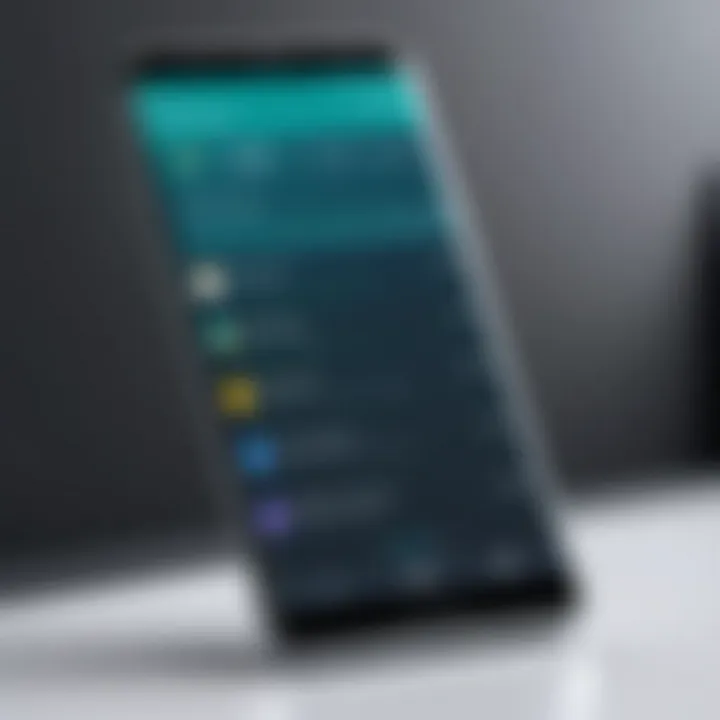
Collection Widgets
Collection Widgets serve as aggregators of information or content. They can showcase various items like photos, bookmarks, or favorite contacts all within one widget. The key feature of Collection Widgets is their versatility, as they allow users to centralize various functions within a single space.
This type of widget is beneficial for users who prefer easy access to multiple items and want to minimize navigation. The major advantage is that it consolidates information effectively. However, a downside could be that as more items are collected, it may become less organized visually.
Benefits of Using Widgets
The use of widgets on Android devices offers numerous advantages. First, they enhance productivity by reducing the time and steps needed to access important information. By placing widgets on the home screen, users create a customized environment that aligns with their individual needs.
Furthermore, widgets can contribute to an improved user interface by providing visual elements that aid functionality. They promote a sense of personalization, allowing users to express their style and preferences. Although they require regular maintenance and adjustments, the overall benefits significantly outweigh these minor inconveniences.
Getting Started with Widgets
Understanding how to start with widgets is crucial for Android users who want to enhance their device's functionality. Widgets can facilitate quick access to information and actions directly from the home screen, offering a convenient way to manage tasks and view updates. Getting started entails knowing your device's capabilities and identifying the right applications to maximize widget use.
Checking Android Version Compatibility
Before adding widgets, it is essential to ensure that your Android version supports them. Different Android versions may have varying widget functionalities. For example, widgets are more advanced in Android 4.0 and above. If you are running an outdated version, consider updating your device to enjoy the full array of widget features.
You can check your Android version by going to Settings, selecting About Phone, and looking for the Software Information. A compatible version will allow you to access a broader range of widgets and features.
Finding Widget-Compatible Apps
Identifying apps that offer widgets is the next step. Many popular applications such as Gmail, Google Drive, and Spotify provide widgets that you can place on your home screen. To find widget-compatible apps, follow these steps:
- Open Your App Drawer: Slide up from the bottom of the home screen to view all installed applications.
- Search for the Widget Menu: Long press on an empty space on your home screen and tap on Widgets.
- Browse Available Widgets: Here, you can see a list of apps with widgets available for use. Each app may have multiple widget styles, such as clocks, calendars, or media players.
Installing apps that support widgets not only enhances the utility of your device but also allows for better organization of information, accessibility, and improved interactivity, all of which contribute to an effective user experience.
How to Add Widgets to Your Home Screen
Widgets enhance the Android interface by providing immediate access to information and functionalities without digging through apps. Understanding how to add widgets to your home screen is crucial for optimizing this experience. This process can greatly improve navigation and overall efficiency while using your device.
Step-by-Step Instructions
Accessing the Widget Menu
To add widgets, you first need to access the widget menu. This step is straightforward and essential. You typically access the widget menu by long-pressing on an empty space on the home screen. This action will trigger a menu that offers various options, including widgets. A key characteristic of accessing the widget menu is its directness; it allows users to navigate easily to their options. This method is often favored because it requires minimal steps and immediately presents the available widgets.
The widget menu is unique in that it showcases all compatible widgets from installed applications. This means you can view and choose from various options tailored to your needs, fully utilizing the home screen's potential. The advantage of this method is its simplicity, yet it could be a disadvantage for users unfamiliar with home screen customization.
Selecting a Widget
Once the widget menu is open, selecting a widget is the next logical step. This action involves perusing the available widgets and deciding which one aligns with your needs. A distinguishing feature of selecting a widget is the adaptability it offers. Each widget represents a different app function or information display, making personalization easy.
This choice is beneficial for individuals who wish to tailor the user interface to their preferences. There are numerous widgets available, from weather updates to calendar events. One unique aspect is that some are designed to be interactive, allowing users to engage with the widget directly from the home screen. However, a potential drawback lies in the overwhelming variety, which can make the selection process daunting for some users.
Placing the Widget on the Home Screen
After selecting your desired widget, the next step is placing it on your home screen. This step involves dragging the widget from the menu to the desired spot on your home screen. A key characteristic of widget placement is its flexibility; users can move widgets around as needed. This feature is advantageous for those who must ensure that their home screens are optimized for their workflow.
The placement process also allows you to take advantage of specific organizational layouts, creating a visually pleasing interface. One unique feature is the ability to adjust the placement according to personal aesthetic preferences or functional needs. However, this could lead to a disadvantage if users constantly rearrange widgets, potentially reducing the home screen's efficiency.
Adjusting Widget Size
After placing the widget, adjusting its size is a crucial step to ensure it fits well within the layout of your home screen. This function allows users to manage space effectively on their home screens. Widgets come in various sizes, and not all take up the same space. Users can either long-press on the widget, which enables a resizing option, or access adjustment settings.
The ability to resize widgets is valuable; it helps to ensure that each widget occupies the desired amount of screen space, balancing aesthetics and functionality. Care must be taken here; placing too many large widgets may clutter the screen, making it difficult to find essential information quickly.
By understanding these steps, you equip yourself with the necessary knowledge to add widgets efficiently to your Android home screen, making your device more tailored and functional.
Customizing Widgets


Customizing widgets is essential in tailoring the Android experience to match individual preferences and needs. Each user may have different requirements for how they access information or controls directly from their home screen. Customization goes beyond mere aesthetics; it can boost productivity and enhance usability. By adjusting how widgets display information or interact with other apps, users can create a cohesive interface that aligns with their workflow. Proper customization minimizes clutter while maximizing functionality.
Changing Appearance and Layout
The appearance of a widget can determine how users interact with it. Changes in design can make widgets visually appealing or seamlessly integrate them with the overall theme of the home screen. Android allows for several modifications that can be easily managed through the widget settings.
- Size Adjustment: Users can resize widgets to better fit their home screen layout. This involves tapping and dragging the edges of the widget to expand or reduce its dimensions.
- Theme Alignment: Widgets often come with theme options that match the device’s color scheme. Changing these themes enhances visual continuity across apps.
- Arrangement: The arrangement of widgets plays a crucial role in accessibility. Users can position important widgets strategically for quick access. Prioritizing key functionalities on the home screen improves efficiency.
- Background Transparency: Some widgets allow for background transparency adjustments. This feature can help in making the widget blend better with the wallpaper or background image.
Modifying Widget Settings
Modifying settings of widgets can significantly enhance their usefulness. These adjustments allow for a more personalized experience, catering to specific user needs.
- Updating Frequency: Users can set how often a widget refreshes its data. For instance, a weather widget can be configured to update every hour or only when opened, which can also help in conserving battery life.
- Content Preferences: Some widgets allow users to choose what information is displayed. For example, a news widget might provide options to focus on specific topics, like technology or sports.
- Notification Settings: Adjusting settings for notifications can prevent overwhelming alerts while ensuring that essential updates are always visible. This allows the user to manage which notifications appear on the widget.
It’s essential to explore all available options within widget settings, as they can significantly impact user experience.
By focusing on these customization aspects, users can optimize their widget experience on Android devices, making it adaptive and much more resourceful. Customization not only enhances the visual appeal but also aligns the widget functionalities with daily activities.
Troubleshooting Common Widget Issues
When utilizing widgets on your Android device, users might encounter various issues that diminish their overall experience. This section is dedicated to addressing two common problems: when widgets do not appear and when they freeze or crash. Understanding how to troubleshoot these issues is crucial for maintaining a seamless interaction with your device's functionalities. Moreover, effective troubleshooting ensures that users can fully capitalize on the benefits that widgets offer, such as quick access to information and enhanced usability. Below, we delve into specific scenarios that users may face while managing their widgets.
Widgets Not Appearing
It can be frustrating when your desired widget simply does not show up on the home screen. There are several potential reasons for this issue, and knowing how to diagnose it can save you time and stress. Here are some possible considerations to bear in mind:
- App Compatibility: Check if the app that provides the widget is compatible with your current Android version. Some widgets may not function correctly if the underlying app has not been optimized for newer versions of Android.
- Installation Status: Confirm that the application delivering the widget is successfully installed. Sometimes, a failed installation can lead to widget absence.
- Restart the Device: A simple yet effective method is to restart your device. This action can often correct temporary glitches and help the system register the widget.
Once you have performed these checks, you should have a clearer understanding of why a widget might not be appearing. If these steps do not resolve the issue, consider looking through user forums or reaching out to tech support specific to the app in question.
Widgets Freezing or Crashing
Another common problem involves widgets freezing or crashing unexpectedly. This issue can impede the effective use of your device and could be tied to several underlying factors:
- Resource Limitation: Widgets consume memory and processing power. If your device's resources are stretched thin due to multiple active applications, this can lead to widgets misbehaving. Closing unused apps can help free up resources.
- Software Updates: Ensure that both the app providing the widget and your Android system are up-to-date. Software updates often contain important bug fixes that can eliminate glitches such as freezing or crashing.
- Widget Settings: Sometimes the settings for the specific widget need adjustment. Open the widget settings from within the main app to alter configurations that may be causing instability.
By understanding these challenges and their solutions, users will be better able to manage their widgets effectively. Addressing these issues not only enhances user experience but also encourages the continued use of widgets for added functionality.
"Troubleshooting is key to enjoying the seamless experience that widgets promise on Android devices."
For more tips and discussions on common issues, consider visiting forums like Reddit or consult resources like Wikipedia and Britannica for broader troubleshooting strategies.
Removing Widgets from Your Home Screen
Removing widgets from the home screen is an essential part of the widget management process on Android devices. This functionality allows users to declutter their interface, improve the overall performance, and ensure that only the most relevant information is displayed. Widgets can take up valuable screen space. When they become unnecessary or when users prefer a more streamlined appearance, removal becomes beneficial. Moreover, removing outdated widgets can help maintain a responsive system, as less clutter contributes to faster navigation and interaction.
Step-by-Step Instructions for Removal
Removing widgets might seem straightforward, but understanding the process can prevent inadvertent mistakes. The following are the steps to take for a clean removal of widgets from your Android home screen:
- Locate the Widget: Navigate to the home screen where the widget is situated. Understanding its location is key in ensuring proper removal.
- Tap and Hold: Press and hold your finger on the widget you wish to remove. After a moment, the widget should become movable, indicating that the removal process is about to begin.
- Drag to Remove: While still holding the widget, drag it toward the top of the screen. You should see a designated area labeled "Remove" or an icon of a trash can. This visual cue indicates that the widget is ready to be removed.
- Release: Let go of the widget once it’s over the "Remove" area. The widget will disappear from your home screen at this stage.
- Confirm if Necessary: Some devices might ask for confirmation before completely removing the widget. Follow the prompt to finalize the removal.
This simple process can greatly enhance the organization of the home screen. Regularly reviewing and removing unused or unwanted widgets can provide a more aesthetic and functional interface.
Exploring Third-Party Widgets
In the realm of Android customization, third-party widgets play a significant role in enhancing user experience. Understanding how to explore and implement these additional widgets can provide greater functionality and personalization. Widgets beyond those that come pre-installed with the Android operating system offer unique features that can greatly improve accessibility and interactivity on your device. Moreover, they often provide users with a refreshing change from stock options, adding new capabilities tailored to individual needs.
When considering third-party widgets, it is essential to examine several factors. The credibility of the source from which you acquire these widgets is crucial. Reliable third-party applications not only guarantee smoother performance but also reduce the risk of malware infiltration. Furthermore, these widgets can range from basic utilities to complex tools tailored for specific tasks, thus enhancing your overall Android experience.
Identifying Reliable Sources
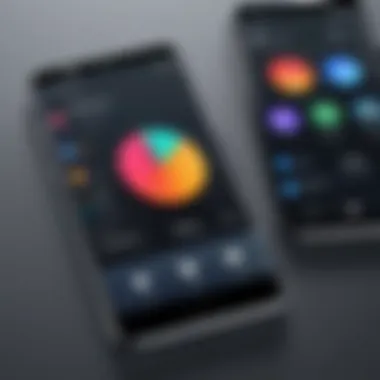
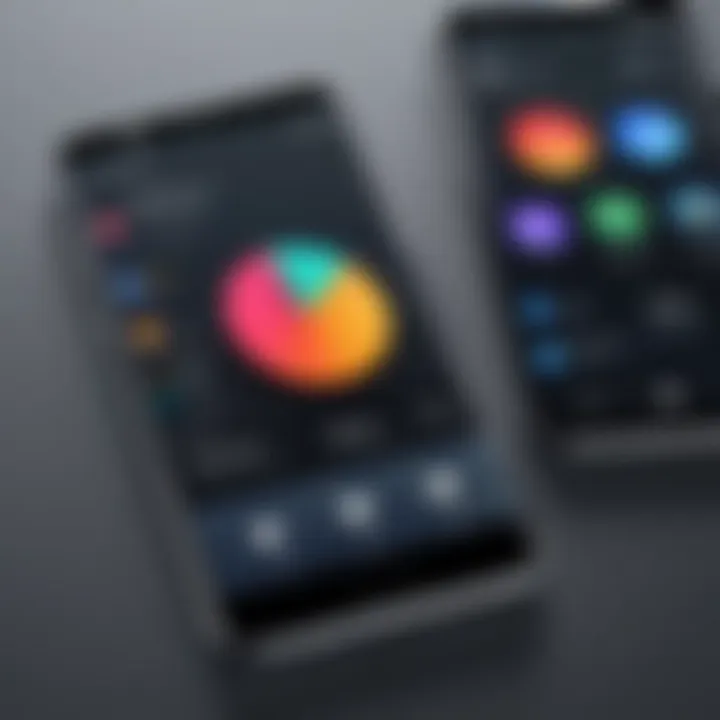
Identifying reliable sources for third-party widgets is paramount in ensuring device security. Several platforms specialize in reviewing and hosting trustworthy applications.
- Google Play Store: This is the primary marketplace for Android apps. Always check the app's ratings and reviews from other users. High ratings usually indicate a more reliable application.
- Reddit Communities: Subreddits dedicated to Android and tech discussions often provide recommendations for reliable widgets. Users share their experiences, and it's a great way to gauge the performance of specific applications.
- Developer Websites: If you find a widget that intrigues you, consider visiting the developer's official website. Here, you can learn more about the application, see user testimonials, and check for any updates.
It's wise to avoid unknown websites, as they may host malicious software that could compromise your device.
Installing Third-Party Widgets
The process of installing third-party widgets is generally straightforward. Here are the basic steps to follow:
- Download and Install the App: Start by downloading the required app from a reliable source. Open the Google Play Store, search for the preferred widget app, and tap "Install."
- Grant Necessary Permissions: Once installed, the app may require certain permissions. These are essential for full functionality.
- Accessing the Widget: After installation, navigate to the home screen. Long-press any blank space on your home screen, which will bring up the widget menu. Here, you will see the widgets offered by your newly installed app.
- Adding the Widget: Select the widget you want to add, then drag and drop it onto your home screen. Follow any prompts that may appear to customize initial settings.
- Adjusting Preferences: Some widgets may require additional settings or configurations to work optimally. Follow the on-screen instructions for best results.
- Ensure the app has permissions that feel necessary but be cautious about sensitive data.
- Review privacy policies whenever possible.
By meticulously following these steps and leveraging reliable sources, you can successfully incorporate third-party widgets into your Android device, optimizing your experience.
Optimizing Widget Use for Performance
Widgets can enhance your Android experience significantly. However, they can also affect your device’s performance, particularly its battery life. It is essential to optimize how you use widgets to maintain efficiency. This includes balancing functionality and power consumption.
Balancing Functionality and Battery Life
The use of widgets should not compromise the battery life of your Android device. Widgets, particularly the dynamic varieties, often update information in real-time. This frequent updating can drain the battery faster. Understanding this trade-off is crucial.
To effectively balance functionality and battery life, consider the following tips:
- Select Static Widgets When Possible: Static widgets do not require constant updates. They display consistent information, which reduces battery drain. If real-time data is not needed, opt for a static version.
- Limit the Number of Widgets: Too many widgets can lead to performance issues. Each widget takes up memory and resources. Evaluate which widgets you regularly use and remove the ones less necessary.
- Monitor Widget Update Frequency: Some widgets allow you to set how often they refresh their data. Reducing the update frequency can significantly save battery life. If you have a weather widget, for example, consider checking updates every hour instead of every 10 minutes.
- Close Unused Apps: Background applications can consume resources. When not using widgets, ensure to close any related apps in the background. This helps free up memory and prolong battery life.
"Managing resources on an Android device is key for an optimal experience. The balance between functionality and battery efficiency must always be considered."
These strategies are simple yet effective. By keeping battery consumption in check, you can enjoy the extended functionalities of widgets without a dramatic hit to your device's performance. Remember, optimizing your usage paves the way for a more satisfying Android experience.
Advancements in Widget Technology
The evolution of widgets on Android devices represents a significant leap forward in user interface design. As technology progresses, widgets are not merely static displays of information; they are becoming more dynamic and integrated with the user's daily life. This section outlines the key advancements in widget technology, emphasizing the improvements in user engagement, functionality, and personalization that modern widgets offer.
Dynamic Widgets
Dynamic widgets mark a notable enhancement in the functionality of Android home screens. Unlike traditional widgets that display fixed information, dynamic widgets update in real time, providing users with the most relevant information at a glance. For instance, a weather widget can now reflect changing conditions, while a calendar widget might display upcoming events without requiring user interaction.
The benefits of dynamic widgets include:
- Real-Time Updates: Users receive immediate information changes without needing to refresh manually.
- Enhanced Interactivity: Many dynamic widgets allow users to interact with them, enabling quick actions directly from the home screen.
- Personalized Experience: These widgets adapt to user preferences and behavior, providing information tailored to individual needs.
Dynamic widgets represent a shift toward a more responsive and tailored user experience. They allow a seamless blend of utility and aesthetics, enhancing the overall functionality of Android devices.
Integration with Smart Devices
The integration of widgets with smart devices showcases a holistic approach to user interaction. As smart home technology continues to expand, widgets allow users to control their devices right from the home screen of their Android device. For example, users can manage lighting, temperature, and security features through dedicated widgets.
This integration offers several key considerations:
- Centralized Control: Widgets provide a unified platform for managing multiple smart devices, simplifying user experience.
- Increased Accessibility: Users can control smart home systems without navigating through various applications, promoting efficiency.
- Automation Features: Many widgets enable users to set up scripts or routines for their smart devices, enhancing convenience.
The advancements in widget technology highlight the ongoing shift towards a more interconnected and user-centered approach in mobile technology. As these features continue to develop, Android devices become multifunctional tools that adapt to an individual's lifestyle, making technology increasingly user-friendly.
The End
In concluding this guide, it is essential to reflect on the significance of widgets within the Android experience. Widgets serve as an integral aspect of personalizing a user’s interface, allowing for both aesthetic appeal and functional enhancement. Through the proper acquisition and customization of widgets, users can tailor their Android device to efficiently meet their daily needs, thus creating a more accessible and engaging environment.
The benefits of utilizing widgets are profound. They provide essential information at a glance and can simplify complex tasks, all without needing to delve deep into applications. For example, a weather widget can show current conditions directly on the home screen, eliminating the need for constant app navigation. Similarly, control widgets can adjust settings with just a touch, promoting a seamless interaction with the device.
Furthermore, the process of adding and managing widgets can impact device performance. Balancing functionality with battery efficiency is crucial; thus, understanding how to optimize widget use helps maintain the overall health of the device. This guide has covered various aspects of widget management, from troubleshooting common issues to exploring third-party options, ensuring that users are well-equipped with knowledge.
In this digital age, with constant advancements in widget technology, it becomes increasingly important for users to stay informed about the capabilities and features available on their devices. Through widgets, Android users can truly enhance their experience by making informed decisions about which features to utilize.
"Widgets can significantly transform the way users engage with their devices, shaping interaction to be more intuitive and effective."
Thus, as you navigate through your Android device, remember the power of widgets in creating a personalized interface that aligns with your lifestyle. Embrace the customization options and leverage the information they provide. Ultimately, this understanding empowers you to get the most out of your device, enhancing not just functionality but also your overall digital experience.







